Steve Vai - His First 30 Years | The Documentary
Page 3: Flex-Able - Alcatrazz - Crossroads
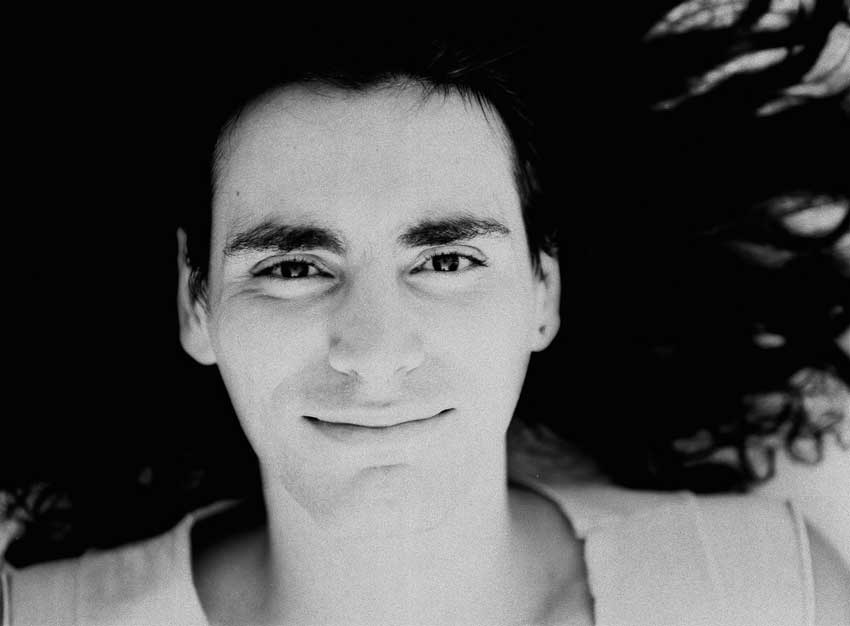
On His Own:
Shortly after Vai arrived in Los Angeles, he fulfilled another teenage dream. He purchased a 4 track sound-on-sound Teac ¼ inch tape recorder. He set up his first little studio in his apartment bedroom and named it SyVy Studio. The studio was covered with Zappa posters and cheesy fake velvet tapestries of belly dancers, dogs playing poker, and Jesus Christ — all sporting Zappa mustaches and beards drawn in with a black Sharpie pen.
Here he recorded many demos, including one called “The Night Before,” later to be renamed “The Attitude Song,” which was originally recorded as an audition tape to be submitted for a potential gig with Alice Cooper. Having heard about this gig the night before the tape was due, Vai wrote and recorded the song in “a stream of consciousness.” Ironically, if Vai would have gotten the gig, he would be following the masterful, unsung Danny Johnson, who would later replace Vai in the band Alcatrazz.
Stucco Blue Studios:
As great as SyVy was, Vai knew he needed a bigger studio. With a $14,000 down payment he saved up from his work with Zappa, his then girlfriend Pia found a spot in Sylmar, California. The house was perfectly situated on a quiet cul-de-sac on a corner lot and more importantly had a shed that Vai could convert into a studio.
He took another $3,000 he earned from giving guitar lessons and doing seminars and went out, bought the wood, built the studio and put the gear in, entirely by himself. (He got the book The Audio Cyclopedia to help guide him.) Vai had no idea how to do any of this before starting the project and even had to borrow some gear from Zappa. But he figured it out, and after eight months of hard work, Vai’s new studio was ready to record.
“I spent five months insulating it, and I loved doing it,” Steve recalled. “And because I adorned the walls with various shades of blue silk fabric, I named the place Stucco Blue Studio.”
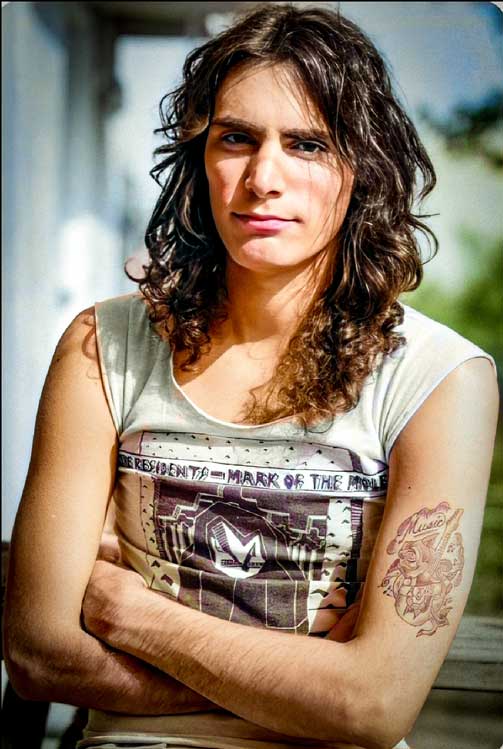
Flex-Able
Between April and November of 1983, Vai recorded the tracks that would become Flex-Able. Many of the tracks originated as wild studio experiments or even jokes. Vai brought his friends in on the recordings, including bassist Stuart Hamm and fellow Zappa band members drummer Chad Wackerman and keyboardist Bob Harris. Pia Maiocco, soon to be Mrs. Vai, was also in attendance. (There were never less than five people living at Steve’s home — so many people at times, it was nicknamed “The Wayward Inn for Refugee Musicians.” Having this many lodgers, though, meant the mortgage was completely paid for with rent money, and all of Steve’s money went back into his craft — a key business lesson he’d learned from Zappa.)
Originally, Flex-Able was to be released on Evatone-Flexi-disk — three disks in all, totaling two and a half hours of music. Hence, the name Flex-Able. The original spelling for Flex-Able was to be the standard spelling for the word flexible. But when the artist working on the cover misspelled the word Flexible as Flexable, Steve looked at the seeming blunder and thought “what if I put a hyphen between flex and able” so it would be a play on the word because he figured in the future he’d be able to be flexible, looks like he was right.
Flexi discs are phonograph records pressed on very thin, flexible sheets of vinyl that were often bound into the pages of music magazines as a free giveaway. Guitar Player Magazine in their October 1984 issue did just that and gave away “The Attitude Song” as a free flexi disc.
But when printing up the flexi discs proved to be too complicated, and Steve wanting to hold a real record with his own music Vai decided to release it on vinyl. Since vinyl could not hold two and a half hours of music, he would release the work in two installments, Flex-Able and Flex-Able Leftovers.
Vai also reluctantly decided to attempt to secure a conventional record contract. He was shocked at what he discovered. Then, as now, the standard record deal involved signing away all of your copyrights in return for an upfront advance (generally around $10,000 at that time) and a minuscule royalty of $.20 a record, that would be used to recoup his advance.
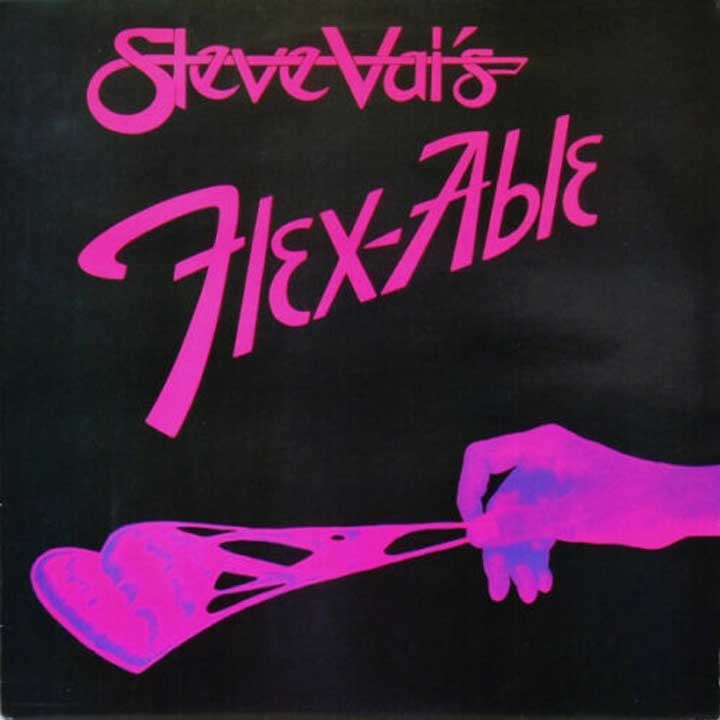
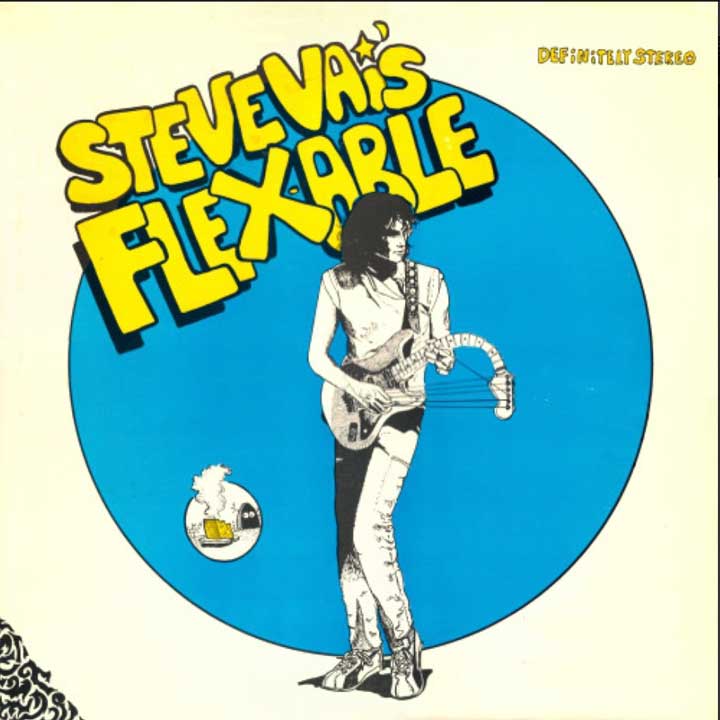

“I thought, this is absurd; I’d never sign anything like that,” Vai recounted. “Record labels bank on the fact that artists believe that a record deal is the Holy Grail, so they’re willing to sell their intellectual property very cheaply. But I had no attachment to the idea of being famous or having my record released by a record company. And that gave me the freedom to turn away from that kind of deal without even considering it.”
Creating his Record Label:
Instead, Vai, along with his then manager Laurel Fishman — formed his own label Akashic Records. The metaphysical name Akashic Records references a compendium of all universal events, thoughts, words, emotions, and intent ever to have occurred in the past, present, or future in terms of all entities and life forms. But when Vai found out there was already a label named Akashic Records, he changed it to Urantia Records. He got the word Urantia from reading “The Urantia Book.” This spiritual, philosophical, and religious book aims to unite religion, science, and philosophy.
Unfortunately, the Urantia Foundation sent Steve a note saying he could not use their name. But fortunately for Vai, he found his next record label name, and already the name of his corporation, “Light Without Heat,” in the writings of the Urantia Book.
sent Steve a note saying he could not use their name. But fortunately for Vai, he found his next record label name, and already the name of his corporation, “Light Without Heat,” in the writings of the Urantia Book.
He then found a distributor, Cliff Cultreri at Important Records, a raving Zappa fan who became Vai’s lifelong friend and ally. (Vai would later send a tape to Cultreri of his favorite unknown guitarist, Joe Satriani, who Cliff would sign as well.) The Important distribution deal netted Vai a generous $4.10 per record sold, and Vai retained his copyrights — a dramatically better deal than a conventional record contract.
In January 1984, Flex-Able was released and began to sell. Although the record showed off Steve’s quirky musical sensibilities and a kind of humor he inherited from Zappa, there was also some death-defying rock guitar playing. The timing was perfect since the shred/metal/virtuoso guitar phenomenon was blasting off. Flex-Able became one of the genre’s cult classics and would net Vai millions of dollars over the years.
1980-1990:
Between the years 1980 and 1990, Vai participated in many music projects. (One under the pseudonym Reckless Fable.) For some, he was involved creatively; for others, he was a hired gun for a few big names and as a favor to a couple of friends. During this period, Vai appeared on over 30 albums. But for this film, we are going to focus on the six most important projects Vai worked on between 1984 and 1990:
Alcatrazz, the movie Crossroads, the David Lee Roth Band, the Ibanez JEM guitar, Whitesnake, and his solo album Passion and Warfare.
If you did the math, all of these extraordinary accomplishments happened in a six-year span. Oh, and he also got married and had his first kid during this period.
In mid-1984, Steve was playing around town with his band Steve Vai and the Classifieds when he got a call asking if he wanted to try out for the metal band Alcatrazz fronted by ex-Rainbow singer Graham Bonnet.
Alcatrazz:
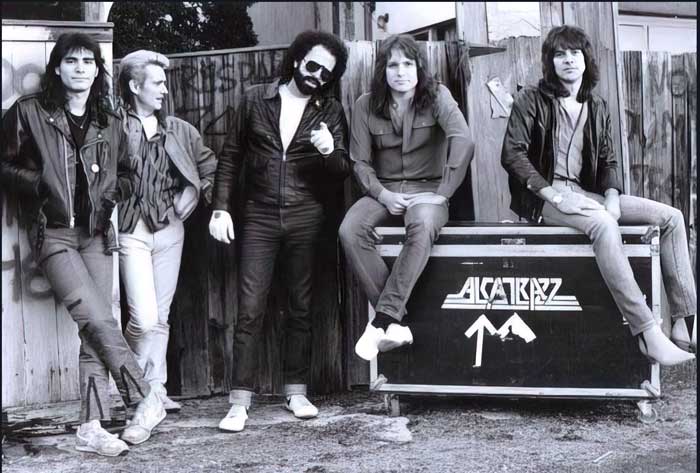
The band members of Alcatrazz were having clashes with their current guitar player Yngwie Malmsteen. When Yngwie had left the band with 3 shows left on the US tour, the band needed a new guitar player so they auditioned Vai and gave him the job.
On July 13 without any official announcement, and with only one day to learn the music Vai played his first gig with Alcatrazz. Some fans at the De Anza Theatre in Riverside, California had heard a rumor Malsteem had been replaced but didn’t know what to expect. One fan commented he knew something was up when he saw the stacks of Carvin amps instead of Marshalls. (Vai was introduced to Carvin amps by his mentor Frank Zappa and eventually signed an endorsement with the company.)
With Vai onboard, the group worked on new material and then headlined a tour in Japan, which introduced Vai to a wider range of fans and allowed the band to play new material that would be recorded on their next album. A concert video was filmed during these dates as well.
The band released Disturbing the Peace in the spring of 1985 through Capitol Records. The album was produced by Eddie Kramer who had worked with Led Zeppelin, Jimi Hendrix, and Kiss, among others. “God Blessed Video” was the first single and video, yet MTV barely played it, thinking it was religious music rather than a dig at the new video scene. The album peaked at No. 145 and charted for 16 weeks. At that point, Alcatrazz had major problems with manager Andy Trueman who had decided to devote all his time to Yngwie, snubbing the band’s label Capitol and undermining all touring and promotion. A 20-city co-headlining tour with Uli Roth had to be scrapped. (They only played 10 dates in the Southwest U.S. to support the album.) Although Disturbing the Peace became another landmark album for the band, 1985 was not a great year for the group overall. However, Vai was about to get an opportunity that would change his career.
Crossroads:
In 1984-85, Ry Cooder and Arlen Roth were the two main musical forces behind the sound of the movie Crossroads. Cooder was the musical director, and Roth was originally brought in to teach the actor Ralph Macchio how to make it look like he was really playing the guitar. This evolved into a musical consultant role.
On top of being an influential blues player, Arlen Roth was the first person to release guitar instructional videos via his highly successful Hot Licks series.
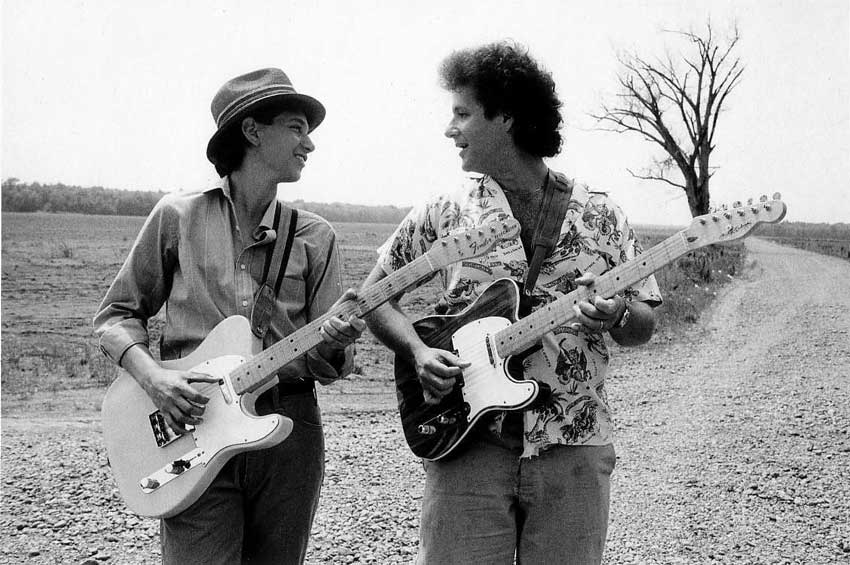
The original “duel” at the end of the movie, where Eugene, Ralph’s character, had to battle the devil’s guitar player for the soul of his teacher Willie Brown, was originally supposed to be between Roth and Cooder on the recording. You can hear that recording on Roth’s Soundcloud page.
As the film progressed, however, the producers were growing less fond of this idea and wanted someone else for the part, much to the disappointment of Cooder who, along with Roth, had already mapped out and recorded the duel. Nonetheless, Cooder was still the musical director and therefore was tasked with finding a replacement.
Keith Richards, Frank Zappa, and Stevie Ray Vaughan were briefly considered for the role, but ultimately the producers were keen on capitalizing on the mid-Eighties “guitar shred” boom. Cooder needed to find a young upcoming guitarist who could really sizzle on the fretboard.
He called over to Guitar Player magazine and talked to editor Tom Wheeler. Cooder said to him, “I need a guy who can play better than Eddie Van Halen, I need a guy who’s smart, who can take directions, but he’s got to be organized. He can’t just do it like a solo: he’s got to have his shit worked out.” Tom replied, “Steve Vai” and then played “The Attitude Song” flexi disc for Cooder over the phone. After listening to it, Cooder said, “Jesus, send him to me.”
Vai was hired and quickly put his own stamp on the part, even writing additional music for the film, including his work on “Eugene’s Trick Bag,” an updated classical piece, at the film’s climax.
Steve was originally only to play the music and not be in the film. But when director Walter Hill saw Steve, he offered him the role of the Devil’s guitar player Jack Butler. Vai first turned down the role, thinking he was no actor, but recanted after Hill suggested he take another look at the script.
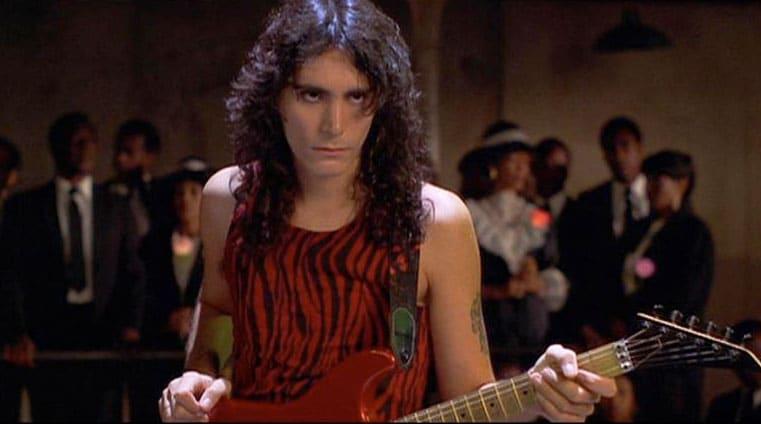
The guitar duel with Vai was about 15 minutes long but was edited down to two minutes to heighten the scene’s impact. The original version included multi-instrumentalist Blues/R&B great Shuggie Ottis cutting heads with Jack Butler.
Quick side note. Ottis, like Vai, played with Frank Zappa when he was young. Ottis was only 15 years old when he laid down the bass for Zappa’s classic instrumental song “Peaches En Regalia”. Ottis’s part in Crossroads was edited out of the movie but can be heard on Vai’s The Elusive Light and Sound, Vol. 1 album; the cut is called Fried Chicken.
Vai being a resourceful young man would later recycle riffs from the climactic duel as the basis for his song “Bad Horsie,” which can be found on his album Alien Love Secrets. Except for the slide guitar bits that Ry Cooder played, Vai played both sides of the duel. The first 4 bars of music is taken from Niccolo Paganini’s “Caprice #5.” but then morphs into a mix of blues and classical music. This was skillfully connected to the story, as according to myth, Paganini sold his soul to the devil in exchange for his musical skills.
Vai and Arlen Roth became lifelong friends as a result of working together on the film. However, Vai’s appointment was initially disappointing to Roth, who felt that Vai’s inclusion permanently dated the movie, rather than letting it be more timeless, as the original script intended.
Many guitarists have stated that seeing the ending climactic scene is why they started to play guitar. Ironically Vai’s infamous guitar parts were left off the Crossroads soundtrack, but the entire duel can be found on Steve’s “Elusive Light and Sound” recording which is a compilation of some of the music Steve’s contributed to various films.
Vai’s Hollywood acting career would be sidelined for the next two decades until he played country legend Hank Williams in 2008’s “Crazy.” (He also executive produced the film.) 14 years later, his fingers starred as Dave Grohl’s hands in the comedy/horror film 666. But for now, in 1985, his acting career was over.